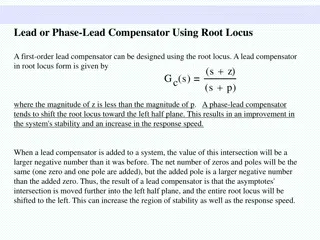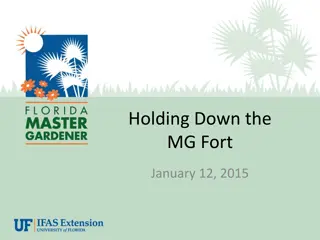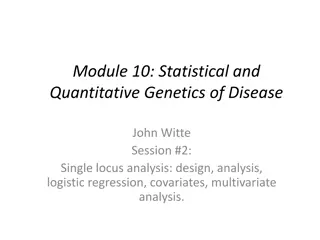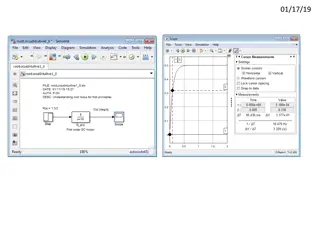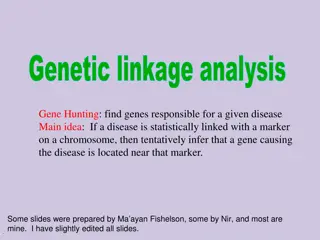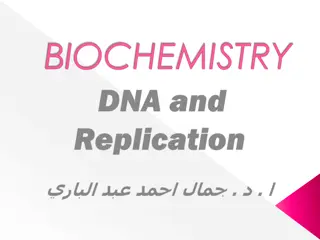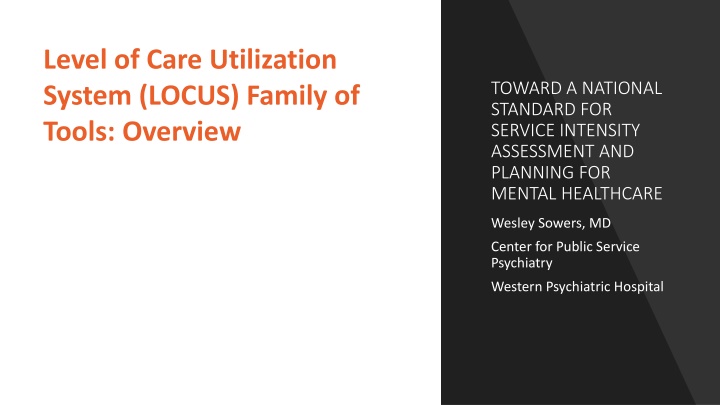
Enhancing Mental Healthcare Service Intensity Assessment and Planning
Discover the Level of Care Utilization System (LOCUS) and the need for standardized service intensity assessment, aiming to improve mental healthcare quality, reduce fragmentation, and optimize resource management.
Download Presentation

Please find below an Image/Link to download the presentation.
The content on the website is provided AS IS for your information and personal use only. It may not be sold, licensed, or shared on other websites without obtaining consent from the author. If you encounter any issues during the download, it is possible that the publisher has removed the file from their server.
You are allowed to download the files provided on this website for personal or commercial use, subject to the condition that they are used lawfully. All files are the property of their respective owners.
The content on the website is provided AS IS for your information and personal use only. It may not be sold, licensed, or shared on other websites without obtaining consent from the author.
E N D
Presentation Transcript
Level of Care Utilization System (LOCUS) Family of Tools: Overview TOWARD A NATIONAL STANDARD FOR SERVICE INTENSITY ASSESSMENT AND PLANNING FOR MENTAL HEALTHCARE Wesley Sowers, MD Center for Public Service Psychiatry Western Psychiatric Hospital
Need for a Standardized Process for Service Intensity Assessment and Planning Provides a common language to enhance communication and collaboration among stakeholders: Persons served Providers Payers Population Health Managers Enhance continuous quality improvement efforts Reduce dysfunction and fragmentation Identify service gaps, improve resource management Reduce administrative waste Emphasis on quality rather than cost
Service intensity assessment and management is the process of determining the correct amount and types of services and supports that best address an individual s needs at a given point in time. Defining Service Intensity Assessment and Resource Management Components A structured method to assess an individual s current needs, Standard continuum of service intensity defined as specific levels of care Setting, clinical services, supportive services Intensity of programming and expense Standard method to match an individual assessed need to a specific level of service intensity
History of Level of Care Decision Making 1980 s- Clinician driven, idiosyncratic decisions Rising costs, questionable quality Inconsistency in Service Need Determinations Lack of Integration between MH, PH and Addictions Fragmentation/Discontinuity Emergence of MCOs to manage resources Development of MNCs, limiting unnecessary services to control cost
Problems With Traditional Resource Management Approaches Complex/Cumbersome/Multiple Inflexible Proprietary- Difficult to Access Focused on Acuity v. Recovery Limited Relationship to Treatment Plan Lacking Transparency Adversarial Relationships
Constructive Response and Repair What should we do to put LOC decision making on the right track? How can we maximize the value of services? (Quality/Cost ratio) What approaches will facilitate recovery and recovery-oriented care? How can we develop integrated clinical processes?
AACP Principles for the Development of a Resource Management Tool Quantifiable, Dynamic Dimensional Ratings Integrated Transdiagnostic Criteria Easy to Use and Understand Flexibility, Adaptability Reliability & Validity Collaborative and Empowering
Instruments to assess intensity of service needs Use six dimensions to characterize needs Enter The LOCUS Family of Tools Defines six levels of service intensity Use ratings in six dimensions to derive recommendations for service provision Method to create uniformity in the decision-making process Clinically efficient assessment and placement
- Unique set of service intensities (LOCs) - Specific but simple criteria sets; reliable - Easily Accessible-Intuitive - Computer friendly-Decision Tree Algorithm LOCUS (1996) - Dimensional guidance for treatment planning - Aids Recovery Oriented Care - Value Management Functions
CALOCUS (2001) and ECSII (2009) Developed in partnership with AACAP Children and adolescents 6-18 years old Same structure and placement algorithm as LOCUS Systems of Care Perspective CALOCUS derived from LOCUS Early Childhood Service Intensity Instrument (ECSII) Developed by the AACAP for infants and children < 6 Follows same principles as parent tools Slightly different structure and placement process
Six Dimensions - Quantifiable and Interactive Six Level Resource Continuum Each level characterized by four variables Specific, but flexible - Adaptable Integrated Emotional Health Variables- Independent of Diagnosis Efficient scoring and LOC determinations LOCUS and CALOCUS
Risk of Harm Functional Status Co-Morbidity, Med, Psych, Addiction Recovery Environment Stress, Support Treatment & Recovery History Engagement and Recovery Status Assessment Dimensions
Rating System Select highest rating in each dimension in which at least one of the criteria is met Five point rating in each scale Criteria set for each point on the scale If no criterion is exact, select closest fit When uncertain, choose higher rating- err toward caution Dimensional scores summed to obtain a Composite Score
Independent Criteria In some dimensions, higher scores indicate: The need for intensive treatment A safe, secure environment Close monitoring of health status These conditions override the composite score Placement at more intensive levels of care Regardless of the composite score.
LOCUS/CALOCUS Levels of Care Level 1: Recovery Maintenance /Health Mgt. Level 2: Low Intensity Community Based Services Level 3: High Intensity Community Based Services Level 4: Medically Monitored Non-Residential Services Level 5: Medically Monitored Residential Services Level 6: Medically Managed Residential Services
Resource Intensities vs Traditional Paradigm Definition by Care Environment, Clinical Services, Support Services, Crisis/Prevention Services Select from a menu of service elements at each LOC Possible Overlap of Elements Especially Support and Prevention Resource Intensity & Cost Ideal seamless continuum Unique Level of Care Definition
Service Descriptions in Each LOC Facilities: security, support, location Medical Involvement: Frequency, intensity, availability Staffing: Nursing, therapists, peers, service coordinators, primary care access. Service Array: clinical treatment, care coordination, housing, mutual supports, rehabilitation- education /employment,. Crisis and Prevention: security, de-escalation, health and wellness coaching,, screening, nutrition, exercise, spirituality, art
Placement Methods and Recommendations Derived from Dimensional Rating Scores Range 7-35 Grid Decision Tree Computer assisted-Derived from decision tree
Simplicity: Intuitive, accessible, single set of criteria Efficient clinical system platform- evaluation, tx plan, progress, transition Advantages of LOCUS FT Over other MNC Considers acute and long term needs for services Participatory: Person centered, recovery oriented, empowering Unique service continuum flexible and adaptable Translation of assessment to LOC recommendation Reduces bias, structural discrimination
What LOCUS Will Not Do Prescribe Program Design Specify Treatment Interventions Replace Clinical Judgment Limit Creativity
Rational Utilization Management Value Maximization Extended Uses of LOCUS Integrated Service Documentation Monitoring Course of Illness and Resource Use Justify Service Plan: MCO Reviews Systems Planning Identify Service Deficits Outcomes? Financing: Rate Setting?
Multiple Training Options Semi-structured interview Certification Process Ancillary Products LOCUS Residential Sub-levels LOCUS Automated Treatment Planner
Slow Progress Swimming against the current 20 years with limited penetration 25 states, 3 Canadian Provinces, some international uptake Mostly provider adoptions Some progressive MCOs Limited vision by both communities 2018 turning point
Lawsuit challenging proprietary UBH criteria and application of its MNC 9th Circuit Court in CA found that LOCUS and ASAM Criteria were the Generally Accepted Standards of Care for Service Intensity Assessment Subsequently overturned on argument that insurance coverage is NOT required to be consistent with the Generally Accepted Standards of Care! Now under appeal Federal Case Law Wit Decision
Wit Case Overview: Court Findings Indentified eight principles of generally accepted standards of care- derived from LOCUS
Aftermath of Wit National attention on LOCUS FTs Adoption by Optum (BH branch of UBH)- 40 million lives California legislation mandates professionally derived criteria Oregon, Illinois to follow, six other states with legislation NYS OMH designates as standard for all BH plans Pennsylvania?? Starts and stops on home grown tool
The Mental Health Crisis and LOCUS FTs How will these tools alleviate the impact of the MH Crisis?
Efficiency: Streamlined documentation and planning Collaboration: ROC and therapeutic relationship, investment Clinician Benefits Structure: Consistent consideration of relevant issues Communication: Transcends fragmentation, common language
Improved Outcomes: The right amount of services Collaboration: Improved member and provider relationships Payer Benefits Systems Planning: Identification of program deficits Financing: Simplified payments and administration Cost Reduction: Expanded Margin, redirection of resources
Collaboration: Participation in assessment and planning Service User Benefits Investment: Ownership and direction Equity: Reduced impact of personal bias and institutional discrimination Continuity: Consistency and progress monitoring
Public Benefits Enhanced Value: Better outcomes and lower cost Improved Health: Prevention and health promotion Greater Transparency: Reduced confusion re: coverage Equity and Access: Reduced discrimination and perceived division.
Whats Next? Education: Awareness of benefits Advocacy: MH Administration: State and Local Legislation State mandates Training: Comprehensive use Perception: Tools of liberation, not oppression Check it out: www.communitypsychiatry.org



